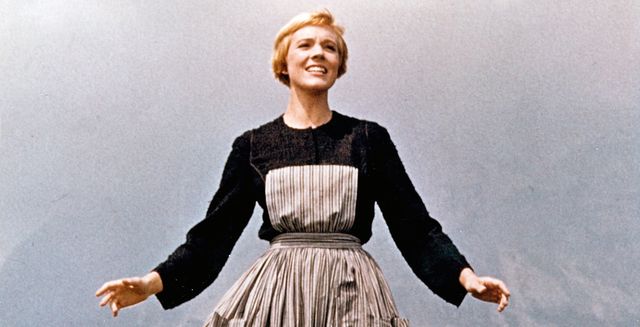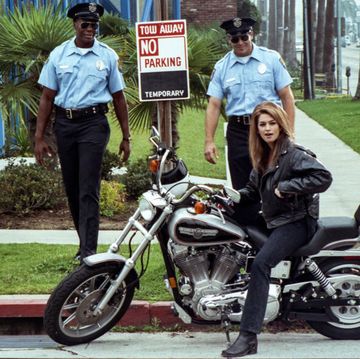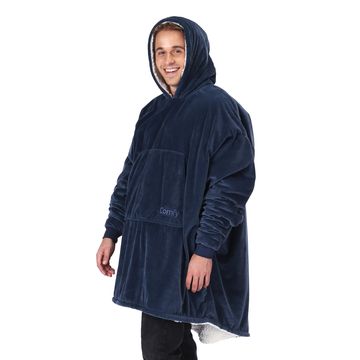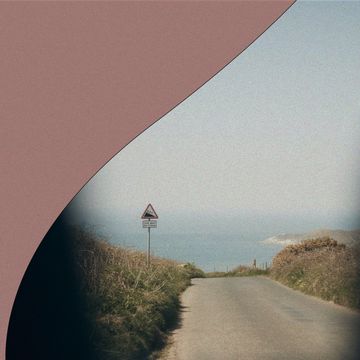Desire is a mushy thing, not easily parsed, and rooted in experiences that might surprise us.
Growing up, as much as my mother allowed, I spent weekday evenings and weekend afternoons watching "The Sound of Music." I sang the soundtrack — theatrical gestures included — up and down our hallway and in the backseat during car rides. While many girls my age were swept up in Cinderella’s night at the ball, I was galloping through the Austrian countryside, eagerly devoting two hours and 54 minutes of afterschool time to nuns and Nazis.
I’ve loved "The Sound of Music" since I was 4 years old, and while I didn’t quite grasp the stakes of the film at the time, it didn’t matter, because what truly enamored me of the movie was Julie Andrews. I still get chills during the opening scene, the first time we meet her. The flutes flutter and the music swells as the camera sweeps over the Alps — until it’s just Andrews, spinning freely, singing gorgeously, surrounded by that lush landscape and enveloped by a soaring Rodgers and Hammerstein score. It’s hard to deny there’s something truly magnetic about her in this scene — and while it may not have registered then, it was love at first sight.
Back then, my understanding of why I liked Maria was simple: I liked her assertiveness, and her unapologetic independence, and that she refused to answer to a man’s literal dog whistle. I liked her short hair and high-necked dresses, and the scrappy charm that came when she climbed trees in them. I liked her voice and that she played guitar. I did not like that she ended up marrying the Captain — nor did I understand what that dislike meant. It was only when I had grown older and was starting to consider my sexuality that I revisited my affection for Andrews as Maria, and wondered over that pivotal, time-honored question for queer women: "Do I want to be you, or do I want to bone you?"
Anecdotally, most of us can name at least one figure, real or fictional, who confounds the blurry boundary between self-identifying desire — I want to be like you — and objectifying desire — I want to be with you. This ambiguity is a common feeling for queer people, especially those just learning to navigate how we identify and where we fit in, but straight women can experience it, too. Platonic "girl crushes" are one socially acceptable way for women to express desire for each other without risking their heterosexuality, and the comfort and privilege that it brings. (I’ll also bet many straight men have met other straight men who make them feel a fleeting spark, its source unknown, only to be promptly quashed with a masculinity-affirming pound-hug — but these feelings are often less openly addressed.)
While I didn’t have words for what I felt watching "The Sound of Music" as a child, I did understand that I wanted some of what Andrews as Maria had. She embodied an autonomy and defiance of gender roles that put her squarely outside the systems into which she should fit — the religious order, motherhood, even traditional womanhood. She had a free spirit and hunger for adventure that reflected my own curiosity about the world. She was at home in her oddness, and for much of the movie, she is an outsider. (It’s important to note, though, that her whiteness gives her complete mobility, allowing her to make the jump from nannying kids to marrying the man of the house.) While Andrews as Maria is undoubtedly feminine, she also served as subtle exposure to androgyny, thanks to her arguably butch haircut and boyish appeal. In fact, to many of the other characters, her appearance, habits, and interests make her uncategorizable: The nuns can’t decide whether she’s a darling, a demon, a wave, or a moonbeam.
In essence, she’s queer.
The book "A Problem Like Maria: Gender and Sexuality in the American Musical" devotes an entire chapter to Andrews as Maria as a magnet for lesbian identification. It consists, in part, of interviews with women who’d watched "The Sound of Music" as kids — and who all had the same feelings for Maria that I did. "No one could domesticate her," one woman says. "In some ways," says another, "I identified with her…, and in some ways I wanted to be the Captain and sweep her off her feet." Watching the ethereally-lit Maria dance the Laendler with the tuxedo-clad Captain was, indeed, the pinnacle of confounded boundaries. For all of us, for most of the movie, Andrews as Maria was a figure of possibility. Later, when she seemingly gives up her freedom to marry the Captain, I and the women interviewed felt disappointed, betrayed even. Once she’s married, she’s no longer herself — or, at the very least, available for us to project our longing and curiosities onto.
When I was a little older, I saw Andrews in "Victor/Victoria" — a 1982 musical comedy that was groundbreaking for its unashamed depiction of queer attraction and love at a time when HIV and AIDS were only barely being publicly acknowledged. In the film, Andrews plays Victoria Grant, an out-of-work singer who poses as a male drag performer named Victor. The plot would likely not pass today’s litmus test for accurate or thoughtful representation, but its main attractions for me, like "The Sound of Music," were the songs and, of course, Julie Andrews.
Except this time, she was wearing a suit.
What Maria left to the imagination, Victor made palpable. At the time, I don’t think I’d ever seen a woman dress or act in this way: She wears her suspenders, slicked back hair, and outright butchness with pride. She seduces men and women alike, regardless of their sexuality. But because Victoria is only pretending to be Victor, there’s also an ongoing tension between her feminine slinkiness and masculine swagger. She/he lives in the space in between, inhabiting multiple genders — and, like Maria, Victor/ia becomes an object of indefinable desire.
Objectively, Julie Andrews is a gay icon. She herself has acknowledged this — she once called it "very flattering" — and the countless queers I saw at the Hollywood Bowl’s Sound of Music Sing-A-Long last year would likely agree. Men love her for her camp; women for her haircut, subversive portrayal of womanhood, and ability to fashion DIY outfits out of drapes (truly). The fact that Andrews later took a such a gender-exploratory role in "Victor/Victoria" is a testament to her artistic flexibility and open-mindedness. Her producing credits speak to her loyalty to the community, too: Her Netflix kids’ show "Julie’s Greenroom," released last year, features a non-binary character.
But subjectively, Andrews is much more than that. She’s the person to whom I owe my affinity for Edwardian fashion, which likely developed from seeing her in "Mary Poppins" at an impressionable age, with her bodice, buttoned-up shirt, and bowtie. She’s been with me since the days I didn’t understand Austria’s acquiescence to Nazis, or why I was so captivated by her. She’s still here, when distance and a different lens allow for an explicitly queer reading of 4-year-old me’s feelings — and, it turns out, the feelings of many other women, too.
For queer people, desire can feel like sticky ground. Many of us learn to suppress our desires, to avoid naming them aloud — sometimes, we lack the language that’s so easily accessible to others. It’s why cultural figures in which we can see ourselves — and why a variety of cultural figures that represent the vast spectrum of human experience — are so important. They offer us the freedom, a vehicle, to explore the hazy expanses of who we are, who we want to be, and who we want to be with. For anyone, queer or not, those opportunities are precious. And for this, to me, Julie Andrews is a treasure.













